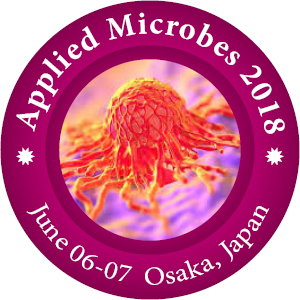I-Hsiu Huang
National Cheng Kung University, Taiwan
Title: Type IV Pili is involved in the pathogenesis of Clostridium difficile in vivo
Biography
Biography: I-Hsiu Huang
Abstract
Background
Clostridium diffcile is a Gram-positive spore-forming anaerobic bacterium. It is the leading cause of antibiotic-associated diarrhea in nosocomial infection. Recently type IV pili (TFP), a proteinaceous polymer widely studied in many gram-negative pathogens was discovered to by produced by C. difficile and has been reported to promote aggregation, gliding motility, and biofilm formation. However, the role that TFP plays in C. diffcile pathogenesis in vivo is still unclear.
Methods
TFP structural genes were inactivated using a modified ClosTron targeting system. Antibodies were raised against PilA1, the major component of TFP. For in vivo studies, mouse normal flora was disrupted by antibiotic cocktail and then spores were fed orogastrically.
Results
Our preliminary results indicated that TFP mutants was more virulence in mouse model of infection. Furthermore, competition assays and in vitro binding assays suggested that TFP mutants outcompeted WT in vivo and displayed increase adherence to epithelial cells. Since studies have indicated that the presence of erythromycin resistance gene in mutants could render them become resistant to clindamycin; an antibiotic used during animal studies, we proceed to construct marker-less mutants. Results showed that TFP mutants were still able to induce higher mortality in vivo. To further unravel the role of TFP in C. difficile pathogenesis.
Conclusion
Our results showed that type IV pili mutants of Clostridium diffcile caused a more severe disease on mice, which indicates that type IV pili is important in CDI. More works are needed to understand the role of CDI in vivo.

